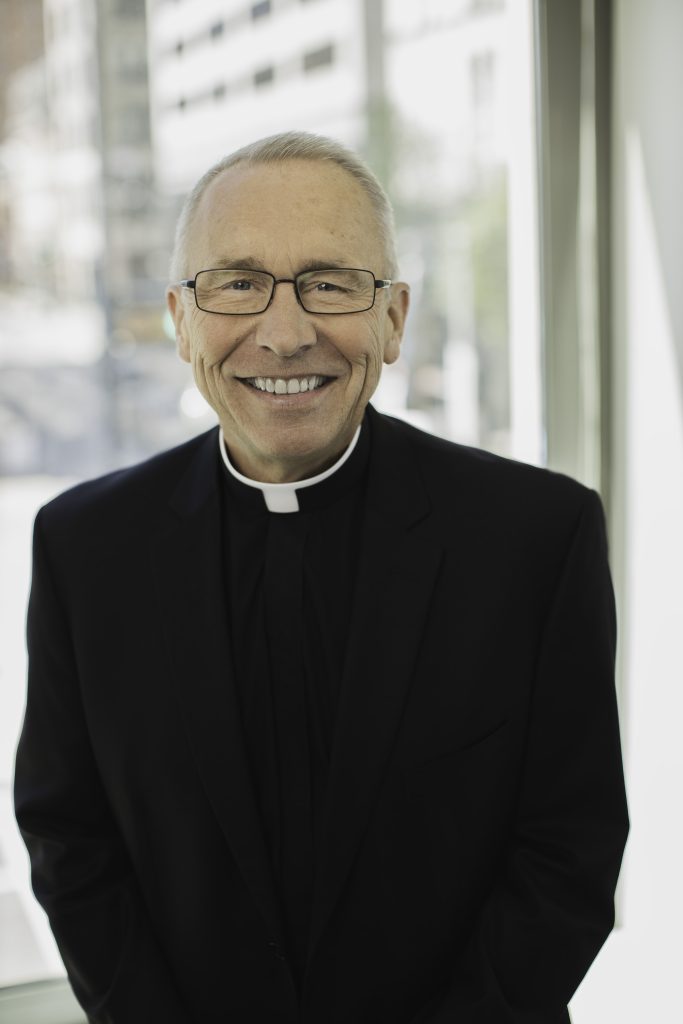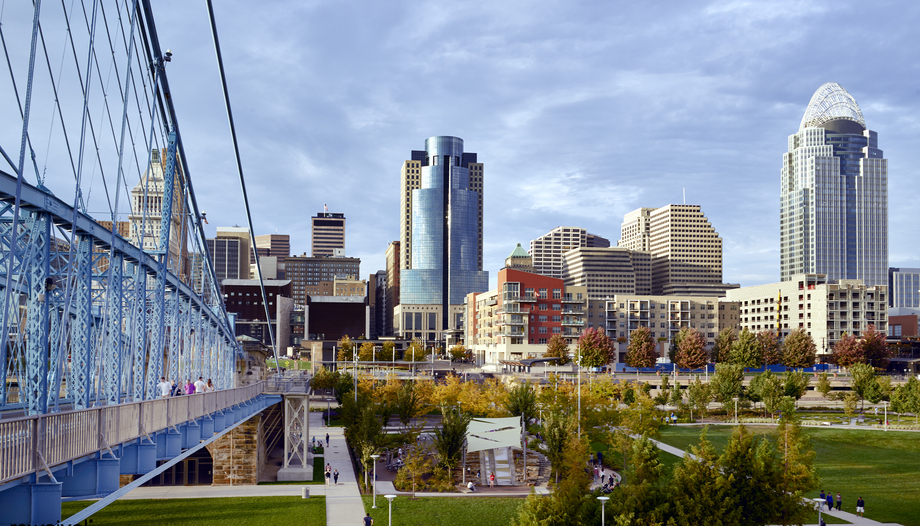 Las Vegas: Catholic faith amidst neon lights
Las Vegas: Catholic faith amidst neon lights Church on the move: Dioceses on the U.S.-Mexico border
Church on the move: Dioceses on the U.S.-Mexico borderKnown as the "Queen City of the West", Cincinnati is located in southwestern Ohio, on the banks of the river of the same name. It is the third largest city in Ohio after Columbus and Cleveland.
This metropolis has played an important role in the economy and culture of the American Midwest. A vital part of its history has been and continues to be the Catholic faith, which arrived and settled soon after independence. In that sense, for more than 200 years the Archdiocese of Cincinnati has been a beacon of light in the Midwest, even in difficult and changing times.
Due to demographic, social and economic changes, as well as fewer priests and a reduction in the practice of the faith - phenomena that are occurring throughout the Midwest region of North America - the Archdiocese of Cincinnati initiated a pastoral restructuring process five years ago to better organize and plan its resources. The project is called "Beacons of light". The idea is taken from Pope Benedict XVI who pointed out in December 2006: "The parish is a beacon that radiates the light of faith and, therefore, responds to the deepest desire of the heart, giving meaning and hope to the lives of individuals and families.

The aim of the project is to "continue to proclaim the Gospel and make disciples in this particular time and place. Part of the initiative is the creation of "parish families", i.e. a grouping of parishes that collaborate and share resources and are led by a pastor assisted by one or more parochial vicars.
To learn more about the Archdiocese of Cincinnati and the Beacons of Light initiative, Omnes interviewed Father Jan K. Schmidt, director of the Pastoral Vitality Office and rector of St. Peter in Chains Cathedral Basilica.
How many Catholics does the archdiocese have and what is its structure?
- We are 19 counties in southern and western Ohio. We have 208 parishes grouped into 57 "parish families" in twelve deaneries. Probably in the next few years there will be only six deaneries. Each of those parish families has a pastor.
What are the main ethnic communities in the archdiocese?
- There are about 450,000 Catholics in the Archdiocese of Cincinnati. They are primarily Caucasian Americans of European descent. We have a Hispanic community that has grown very rapidly with migration. Years ago, when we began the process of planning and restructuring the archdiocese, we estimated that there were 60,000 people of Hispanic origin. But now, with the help of a census, we find that we have double that, that is, more than 120,000 Hispanics, many of whom are not included in the 450,000, because most of them are not used to registering in parishes, even though they attend them regularly.
What are the main groups or apostolates in the archdiocese?
- There are several, but our main evangelistic ministry is called "Christ renews his parish" (CRHP) which began in Cleveland, Ohio. It is very successful. Besides this, there are other ministries that in a sense seek to give continuity to CRHP and are facilitated by the Evangelism Department.
CRPH is a weekend retreat for adults, beginning on a Friday evening and extending through Sunday. Some pastors try to have the group conclude with one of the Sunday Masses so that this serves as a sort of reintroduction to the parish. It is very intense. It can be done with a priest always present or without. During the retreat the sacrament of reconciliation is offered and there are many activities. The retreatants like the format and content of the retreat very much. After the retreat we try to follow up with the retreatants to keep them involved in the parish and especially to help them grow in their faith and get involved in apostolates in their parishes.
What are Archbishop Schnurr's top priorities?
- It could be said that he has two priorities: vocations and the Beacons of Light initiative. On the former, the archbishop has worked very hard on that. He has been the catalyst behind what we have been able to do. During his tenure, 64 priests have been ordained. That's a pretty good number for a diocese of our size. We have a seminary that is doing very well. It is full. We have over 50 seminarians studying for the Archdiocese of Cincinnati and another 60 from dioceses around the country. The place is a magnificent building in a wonderful location, a very spiritual place that gives our young men a great formation experience.
The second priority is our "Beacons of Light" planning initiative. Its purpose is to invigorate and revitalize our churches through the new evangelization with the goal of making our parish communities places that attract people. It is not about closing places, but building them. This restructuring initiative is happening in part because of the economic, social and demographic changes we are experiencing in this part of the country. For example, many people are moving south because industry and jobs have relocated to those areas. Also, the birth rate has gone down and that causes a problem.
We have a section in the northern part of our diocese (three counties) where all are farmers, 95 % of whom are Catholic, many of German descent. With great effort they have sent their children to college and are proud of it. But their children no longer returned to settle and live in the area where they were born. They went to work in the big cities. All of that means we have a decline in our population, a demographic shift. And to try to deal with those changes, we've done this restructuring process of "Beacons of Light."
Part of the initiative is the creation of "parish families". Prior to 2022, we were grouped into regions and in many cases priests had several parishes, up to two or three. What this new restructuring into "parish families" has allowed us to do is to make sure that there is not only one pastor in each of the 57 "parish families," but that there are several vicars available, assigned to them. Now, for the first time in 25 years we have priests working together. In other words, we have pastors with parochial vicars and parishes sharing resources.
How was the archdiocese's experience in the diocesan phase of the synod of bishops?
- Our permanent deacons were in charge. More than 3,000 people participated in the meetings. We were the second diocese to finish preparing the report that had to go to the United States Conference of Catholic Bishops. I think good things will come out of the synod. Several issues came out of the synod, among them subsidiarity, and that is something we already practice. That is, here in the life of the Church there is a dialogue between the people, their pastor and the archbishop. There is communication. Decisions are made from below.
How has the diocese's experience with the "Eucharistic Renaissance" initiative been?
- A few years ago we celebrated our bicentennial in the archdiocese. As part of the activities we had a large pilgrimage through the 19 counties. For the National Eucharistic Encounter in Indianapolis, Indiana, there will be pilgrimage routes departing from various points in the country to Indianapolis. One of those routes will be through Cincinnati. Therefore, we will have many events related to this pilgrimage. For example, we will have a Mass in the cathedral with the archbishop, at the end of which he will send them to Indianapolis. It is a city that is close to Cincinnati, just an hour and a half drive away. The archbishop is encouraging people to participate.
What would you say to a young man who is in the process of discerning a priestly or religious vocation?
- I think one of the most important things I would tell them is to persevere. In your vocation it is important to keep your focus on the call that God has put in your heart. And those who go to the seminary it is important that they allow themselves to be formed, so that they become holy men who when they leave can serve their people well.











